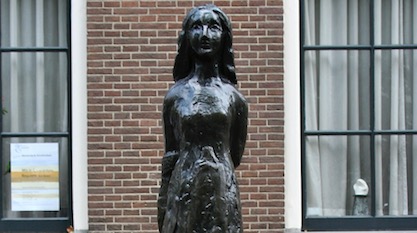 Culture & Ethics
Culture & Ethics
 Evolution
Evolution
What Anne Frank and Ota Benga Have in Common


John West is scheduled to screen the new documentary Human Zoos Sunday at 3 pm at the First Baptist Church in Athens, Texas. He noted this yesterday in a very interesting and unexpected commentary for the MLK Day weekend on Dr. King’s views about pseudo-scientific racism, the kind that resulted in Ota Benga’s captivity and display in New York City in 1905.
An article about the screening and accompanying Q&A, for the Athens Daily Review, offers a provocative analogy. Speaking about the film, the event’s organizer, Dr. Bruce Woodall, recalled his first encounter with The Diary of Anne Frank:
“This is not a film about religion,” said local physician Bruce Woodall, who invited West to Athens. “It’s not a preaching film. We want this to be an open conversation.”
Woodall likened his first viewing of “Human Zoos” to the first time he read “The Diary of Anne Frank.”
“Anne Frank gave us a mental image of what it meant to be persecuted,” Woodall said. “But who’s ever heard of Ota Benga? No one has, and that to me is an injustice. He suffered from the same ideas that would give us the Holocaust. Subtle ideas are alive and well. We have to learn how to recognize them. I hope watching this film raises our sensitivity to recognizing bad ideas even when they’re disguised.”
Anne Frank and Ota Benga: The comparison isn’t perfect — how many comparisons are? But Dr. Woodall is right that cruelty and injustice can seem an abstraction, committed against faceless people. The personality of Anne Frank, so vivid in her diary, did a great deal to raise consciousness about the sadism of the Nazi Holocaust.
To speak of the impact of science-tinged racism, with the eugenics movement in the United States from which the Nazis learned much, can also feel abstract. Attaching a name, a face, and a personal story to it — Ota Benga’s — is one of the important accomplishments of Human Zoos.
Photo: Anne Frank Memorial, Amsterdam, by Håkan Dahlström, via Flickr (cropped).
